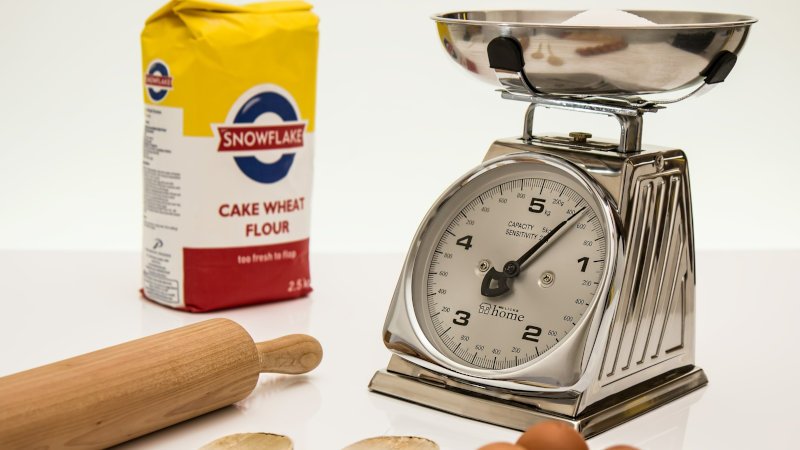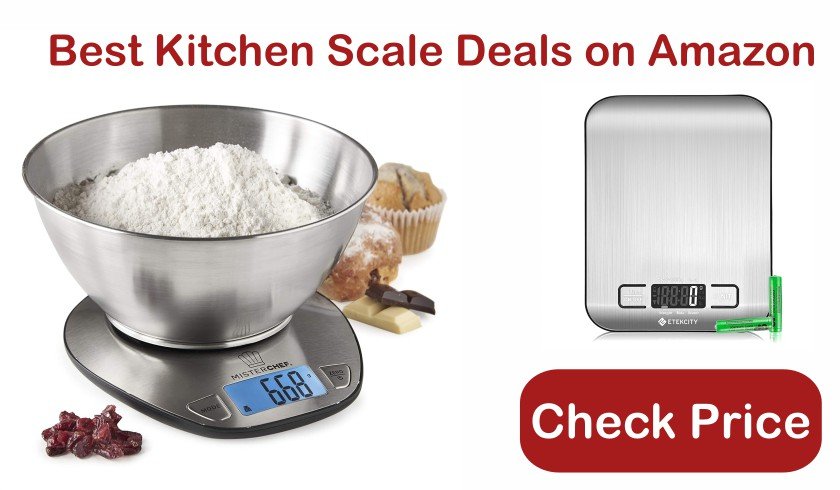A food scale is a kitchen appliance that you will find in many kitchens around the world. It is used to measure the weight of food, so it can be accurately measured for cooking or calculating macros throughout the day. Besides, a kitchen scale can help you ensure that your dishes are a perfect size every time, which means less waste and greater meals to enjoy with friends and family. If you are looking to start cooking more, but don’t know how to use a food scale, then this guide is for you!
Moreover, you may think that you’re eating healthy, but how do we know for sure? That’s where a food scale comes in. By weighing the amount of what you eat and comparing it to your daily calorie intake goal, you can ensure that you are on track with your weight loss goals. This is an important step because if not monitored correctly, one or two extra bites could lead to weight gain down the road.
What are some tips for using a food scale successfully? We recommend buying a kitchen food scale, so there is no guessing when measuring out ingredients at home. It also helps to weigh foods before cooking them, so they aren’t cooked away.
It’s time that you switch from using measuring cups and eye-balling ingredients. This article will provide everything that a beginner needs to know about how to use the kitchen scale properly. We’ll cover how they work and why you should be investing in a cooking scale.
Why Should You Invest in a Cooking Scale?
Scale up your cooking game. To get the most accurate results, trade in that old measuring cup for a digital scale! Digital scales are not only more reliable and precise, but they measure both wet and dry ingredients just as you need them without any extra fussing around with those pesky cups of flour or sugar.
While liquids will always have the same volume no matter what, things like powdered chocolate can change depending on factors such as how compact it is inside its container; after all, who wants half-chocolate muffins? Here are some reasons to convince you to use a cooking scale for all your recipes.
- Maintain consistency and accuracy. Digital scales offer precise ingredient measurements. Precision is especially important for baking as it relies on chemical reactions that need exact measurements of every ingredient.
- Convert ingredients into measures you’re familiar with. If a recipe calls for 50 or 100 grams of flour, but you’re not used to using metric units, digital scales can convert from one measure system (metric) to another easily, so there’s no confusion when measuring out your ingredients!
- Measure serving sizes. People often measure their portions before they eat, as a part of living healthy. A digital scale makes it easier to weigh and portion out food according to serving sizes. Besides, a cooking scale has a multitude of benefits for those looking to maintain or improve health-related aspects such as dieting: it measures nutritional information like calories, sodium, protein & fat, which means fewer surprises when preparing meals.
- Mix cocktails and drinks. You can craft the perfect cocktail with a digital scale that automatically measures your ingredients and ensures you’re not over-pouring. With this added precision, it is easier than ever to get just what you want! Whether making coffee or cocktails, accuracy is key. A digital scale helps ensure every drink will taste right thanks to its ability for accurate measuring of liquid components like water or alcohol content.
- Less dishes to wash. The benefits of a digital scale can save you time! With the measurements programmed into one device, there’s no need for multiple bowls or measuring cups. Plus, cleanup will be simpler with fewer dirty dishes to wash afterwards.
How to Use Weighing Scales for Cooking
If you’ve ever had a recipe that called for “1 cup of flour” and been left guessing how much that is, or if you want to make sure your portions are always on point, invest in a food scale! It’s super easy to use – just turn it on by pressing the “on/off” button (usually located at the top), set it to measure in grams by pressing the weight button then put your ingredients into an empty bowl.
The numbers should start counting up as soon as they touch the surface of what you’re weighing. When measuring liquids, like water or oil, be sure not to pour them directly. Keep on reading to learn more in detail on how to use a weighing scale for food.
How to Use Analog or Mechanical Scales
There are two basic types of food scales: analog (mechanical) and digital.
An analog or mechanical weighing scale typically features a dial indicating the measurement and a platform that serves as the plate or surface where you are supposed to place objects. To start measuring them out with one of these tools, first, check the dial and place it at zero if necessary. Then set up your tray under or on top of the scale, depending on what type you have. Most are designed for either plate underneath or trays placed above (the most common style).

After placing your tray, the hand on the dial will move depending on what’s in it. If you manually reset to zero with a knob or take note of its weight so that when measuring ingredients later, they can be subtracted from the total amount of whatever is being measured.
How to Use a Digital Scale
Digital scales are the best way to measure ingredients since they save time and provide more accurate measurements. Place your ingredient on the platform and let it be read out. Tare your scale if needed by pressing a button, then add other items you need such as flour or liquid.

Apart from this, it is important to learn how to calibrate a digital scale for an accurate measurement using the scale. The calibration process is the key to accurate and precise weight readings on your digital scale. Keep these tips in mind:
- Calibrate on a flat, level surface for more accuracy.
- Use gripping pads or mouse mats next to the weighing platform to absorb vibrations that could throw off measurements.
- Look at your owner’s manual for detailed instructions about how to calibrate with the make and model of scales you’re using.
- Additionally, use the calibration weights as they help with ensuring accurate readings.
- Calibrate regularly as, without calibration, the weight of what you’re measuring will be off by as much as 50%! This will cause a cooking blunder for sure.
How to Reverse Weigh Using a Cooking Scale
You may need to measure a giant bowl or a skillet that will not fit the scale. So, instead of using an additional dish to weigh your oils, sauces, and condiments, use the reverse weighing method.
For this, place the bottle of sauce or oil on the scale and zero out the scale. Now remove the bottle, and add the ingredient into the skillet. Place the bottle on the scale again and calculate how much is missing from the bottle.
How to Use a Food Scale for Portions and Macros
- Place the mixing container on the food scale and zero out the reading.
- Add the whole recipe to the scale and note the weight.
- Calculate the recipe’s total macros and calories with a tool like MyFitnessPal.
- Divide the total macros and calories by the number of servings. This will tell you the number of calories per serving.
- After this, you may divide the recipe into portions along with the desired weight.
Wrapping Up
We hope we’ve given you a lot of helpful tips for you to learn how to use a food scale. If you’re searching for a method to make cooking easier, more accurate, and less time-consuming, then using a food scale is the answer. The benefits of switching from measuring cups to scales are numerous – not only can it save you time in the kitchen, but there’s also an increased accuracy that comes with being able to see measurements right on your screen.
And if you’ve been struggling with sticking to healthy eating habits or counting calories without having a proper tool? A digital food scale makes weight management easy! Whether it’s keeping track of portions while following recipes or monitoring calorie intake per meal, these little gadgets will help keep things organized in one place, so everything runs smoothly and effortlessly.
Understanding how to use a food scale is an important step in the kitchen. Whether you measure out ingredients for cookies, pie crusts, or bread dough, scales are far more accurate than cups and tablespoons. In addition to using them for baking projects, they can also be useful when cooking meatloaf or casseroles, as well as any recipe that requires measurements of liquid. The best part about this tool? It will make your life considerably easy as you will not have to worry about adding too much salt!
Plus, it’s easy on the wallet since there’s no need to buy a whole set of new dishes and utensils (or upgrade from plastic). Also, check our other blog posts for more information about cooking healthy meals with the right appliances in your kitchen.
Originally published on Comfortably Cooking.

